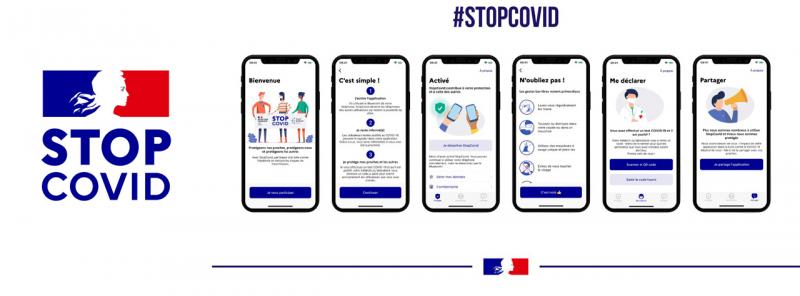Following the Corona Virus outbreak, the French government has been seeking ways to limit the spread of this deadly disease. Social distances, masks utilization, and drastic limits to the nightlife have been some of the government’s best allies so far. On Tuesday 2nd of June, the government launched the application StopCovid in order to add an ally in this battle (StopCovid, 2020). However, the results have been far from satisfying, and here is why.
In the quest “to protect, protect others, and support the efforts of caregivers and the health system to stop the chains of contamination as quickly as possible and avoid a second wave of the Covid-19 epidemic” (StopCovid, 2020) the French government has released StopCovid. It is a mobile contact tracing application, which is intended to warn of a possible transmission with an infected person. As well, when tested positive, it is much easier to trace back someone’s contacts rather than collecting and contacting one by one these individuals.
As of September 4th, the application only had 2,2 million active users (less than 4% of the whole population), making it incredibly hard to find its true utility (Bellier, 2020). Even the French prime minister, Jean Castex, has admitted on national television that “Yes, I (Jean Castex), encourage the French population to do it (download the app), but I haven’t done it” (Licata, 2020). In England and Wales, NHS Covid-19, the equivalent application launched on September 24th, has been downloaded 12,4 million times in just 4 days. In Germany, it is more than 20 million active users (Licata, 2020). So where did the French government get it wrong?
On July 20th, the CNIL (the French National Commission for Informatics and Liberties) has put on hold the application due to various GDPR (General Data Protection Regulation) violations (Sfadj, 2020). The application’s users were therefore more reluctant to download and use the application. Furthermore, StopCovid has been described by its users as having “a poor and non-gamified interface” (Sfadj, 2020). In fact, for such an application to prosper, it is key that its users identify a kind of game in finding “live” who has tested positive or not, as well as being intuitive. Finally, the government’s marketing campaign has been described as “from another time”, as they poorly communicated concerning the use of data (Sfadj, 2020).
With monthly maintenances costs of 250 000 euros and with a successful purpose if at least 80% of the population is using the application (Bellier, 2020), the existence of StopCovid is being deeply questioned. It is an interesting example of unsuccessful innovation, proving that when an application is not user-friendly, not GDPR conciliant and poorly advertised, it is meant to fail.
References
Bellier, U., 2020. Stopcovid : Quatre Mois Après Son Lancement, Une Appli À La Peine.
Economie.gouv.fr. 2020. Stopcovid. [online]
Licata, D., 2020. Stopcovid : À Quoi Va Ressembler La Facture De L’Appli Anti-Épidémie ?.
Sfadj, R., 2020. Les Trois Erreurs Qui Plombent L’application Stopcovid. [online] Slate.fr.




